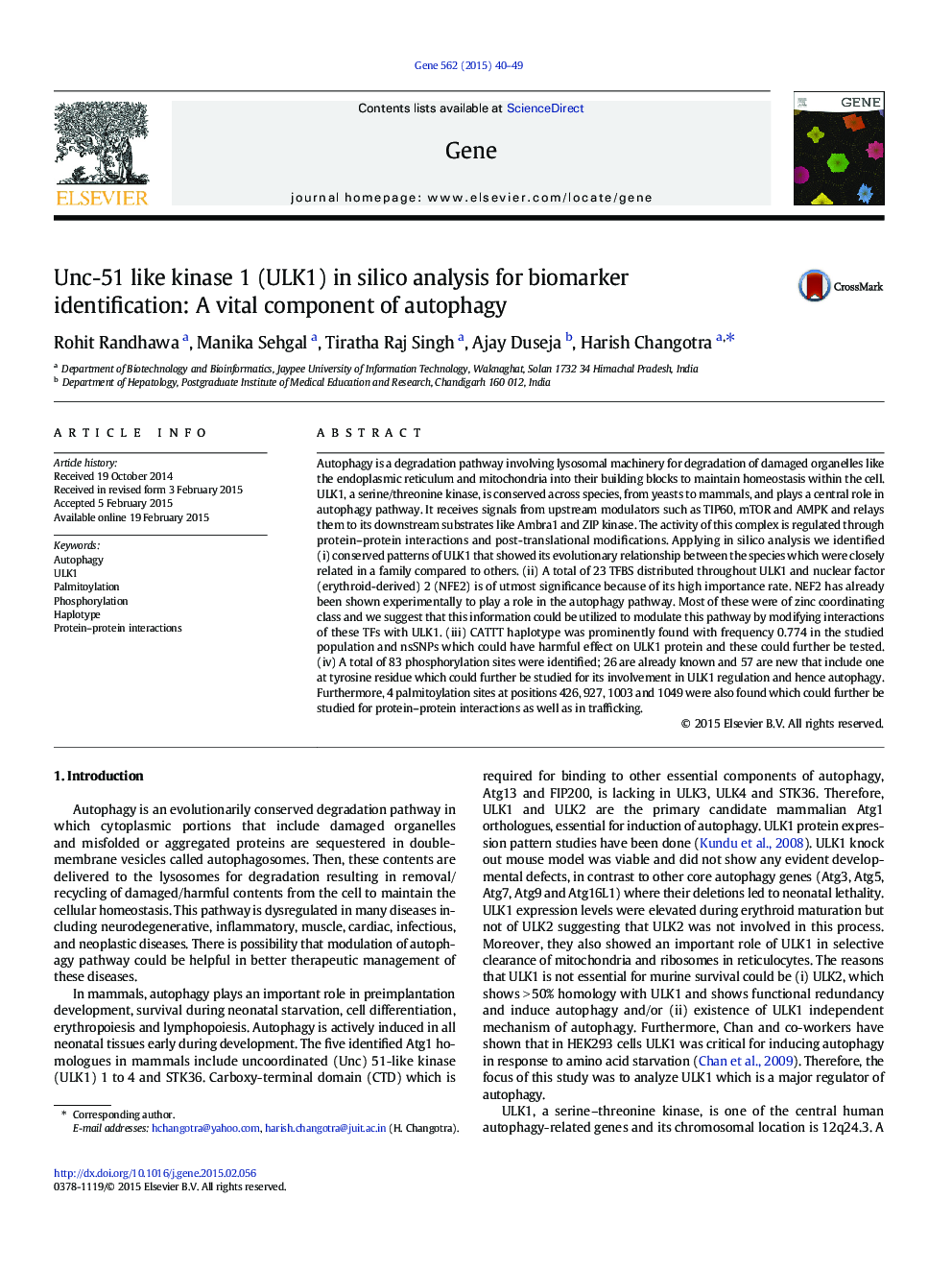| کد مقاله | کد نشریه | سال انتشار | مقاله انگلیسی | نسخه تمام متن |
|---|---|---|---|---|
| 2815754 | 1159890 | 2015 | 10 صفحه PDF | دانلود رایگان |

• ULK 1 is evolutionary conserved between the species.
• Twenty three TFBS were identified in ULK1 and are distributed throughout the gene.
• Phosphorylation (58) and palmitoylation (4) sites were present throughout ULK1.
• Four coding nsSNPs were predicted with damaging effect on ULK1 protein.
Autophagy is a degradation pathway involving lysosomal machinery for degradation of damaged organelles like the endoplasmic reticulum and mitochondria into their building blocks to maintain homeostasis within the cell. ULK1, a serine/threonine kinase, is conserved across species, from yeasts to mammals, and plays a central role in autophagy pathway. It receives signals from upstream modulators such as TIP60, mTOR and AMPK and relays them to its downstream substrates like Ambra1 and ZIP kinase. The activity of this complex is regulated through protein–protein interactions and post-translational modifications. Applying in silico analysis we identified (i) conserved patterns of ULK1 that showed its evolutionary relationship between the species which were closely related in a family compared to others. (ii) A total of 23 TFBS distributed throughout ULK1 and nuclear factor (erythroid-derived) 2 (NFE2) is of utmost significance because of its high importance rate. NEF2 has already been shown experimentally to play a role in the autophagy pathway. Most of these were of zinc coordinating class and we suggest that this information could be utilized to modulate this pathway by modifying interactions of these TFs with ULK1. (iii) CATTT haplotype was prominently found with frequency 0.774 in the studied population and nsSNPs which could have harmful effect on ULK1 protein and these could further be tested. (iv) A total of 83 phosphorylation sites were identified; 26 are already known and 57 are new that include one at tyrosine residue which could further be studied for its involvement in ULK1 regulation and hence autophagy. Furthermore, 4 palmitoylation sites at positions 426, 927, 1003 and 1049 were also found which could further be studied for protein–protein interactions as well as in trafficking.
Journal: Gene - Volume 562, Issue 1, 10 May 2015, Pages 40–49